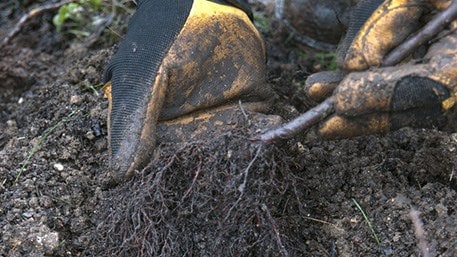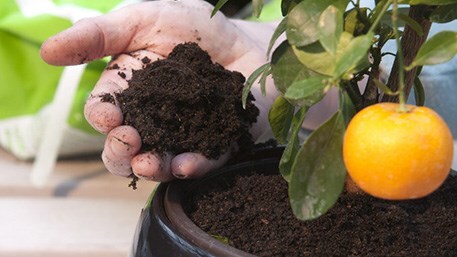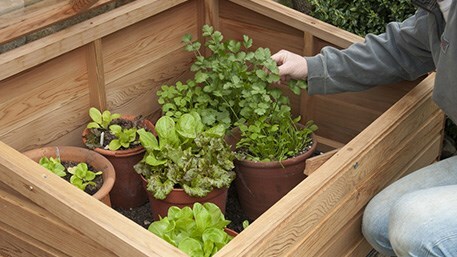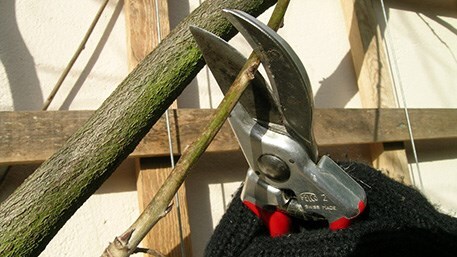
You can still plant bare root hedging, trees, shrubs and fruit now, getting them off to a good start early in the new growing season

Topdress indoor citrus plants or repot if necessary with John Innes No 2 compost with a little added sand or grit

If the soil is workable plant some early-flowering heathers – Erica flowers are a bee-magnets and plants will grow in any soil, in sun or light shade

Buy seed potatoes as soon as possible for the best choice. Chit tubers by placing them ‘eye’ end up in trays or egg boxes in a light, cool but frost-free place

Sow crops such as broad beans and lettuce and place in greenhouses or cold frames for earlier havests

Cut back the side shoots of wisteria shortened during last summer, pruning to two or three buds.
Kitchen garden
- Create a new asparagus bed and keep weed free with a thick mulch of well-rotted organic matter. Order AGM cultivars such as ‘Backlim’, the late cropping ‘Lucullus’ or ‘Gijlim’ for spring planting
- Apply a dressing of fertiliser – Growmore as directed by the manufacturer or blod,fish & bone - and mulch around tree, bush and cane fruit after pruning
- Overwintering mint will now have deteriorated so repot some of the healthiest sections of root and keep in a sheltered location
- It is not too late to plant garlic. Plant the individual cloves 15cm (6in) apart and 4cm (1.5in) deep. Avoid garlic cloves bought from a supermarket – they may carry disease and may not be suited to the climate but choose AGM cultivars such as ‘Solent Wight’ and ‘Arno’
Ornamental Gardens
- Plant new climbers such as clematis and honeysuckles, making sure they are situated at least 45cm (18ins) from the wall or fence to avoid the potentially dry ‘rain shadow’ area
- Prune summer-flowering deciduous shrubs, usually those that flower on the current year’s growth. Shrubs that need regular pruning include Buddleja davidii, Ceratostigma, Hydrangea paniculata, Lavatera, Leycesteria, Perovskia, hardy fuchsias, and deciduous Ceanothus.
- Prune floribunda and hybrid tea roses as growth is just resuming, usually in mid-February in the south, but in northern and colder areas wait until March.
- Finish weeding and digging borders and new planting areas and cut down any dead perennials before newly emerging growth
- Renovate deciduous hedges including beech and hornbeam by up to half in height and width and follow with an application of general fertiliser such as Growmore or fish, blood and bone to encourage vigorous regrowth
Glasshouse and indoor plants
- Prune back the stems of overwintering fuchsia to two buds to encourage bushy compact new growth
- Cut back or thin indoor climbers such as Stephanotis floribunda, Hoya carnosa and Mandevilla
- Hardy annuals offer long lasting flowers in the summer months. Marigolds (Calendula and Tagetes species), Cerinthe major var. purpuracens and Orlya grandiflora can be started off indoors
Pest and Disease Watch
- Complete spraying with plant oil winter wash, used to treat overwintering eggs of aphid pests such as plum aphid or cherry blackfly on dormant deciduous fruit trees and bushes (e.g. Growing Success Winter Tree Wash or Vitax Winter Tree Wash)
- Watch out for downy mildew and black spot on winter pansies. Remove any infected leaves and destroy badly affected plants. To avoid the build-up of diseases, do not plant pansies in the same place every year
- Watch for damping off in seedlings - warm moist conditions and poor air circulation encourage collapse and decay, especially damaging in spring when light levels and temperatures are low and seedlings grow slowly
